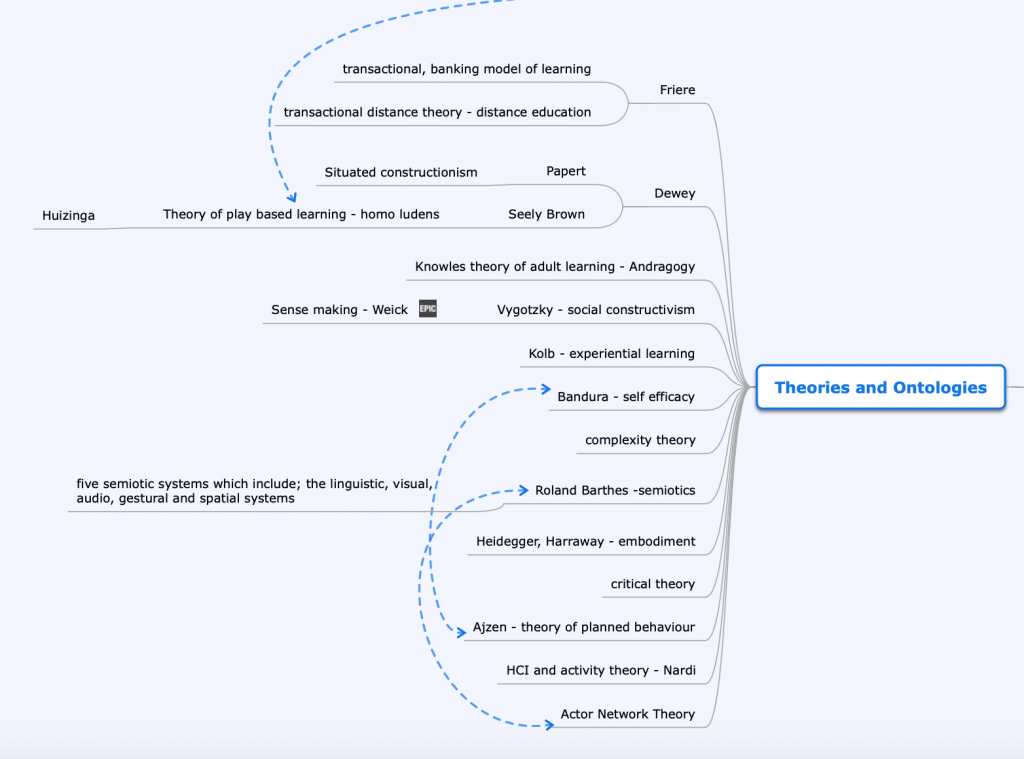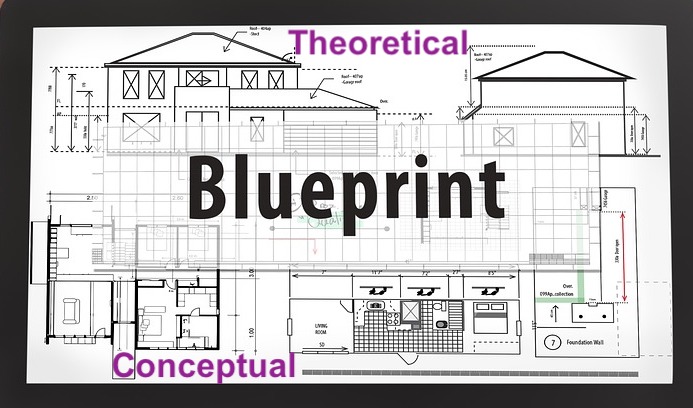Blueprints and Frameworks
This is a reflection on the need for theoretical and conceptual frameworks as explored in Grant & Osanloo (2014). This article calls for a deeper understanding and discourse in PhD studies around the “importance of theory-driven thinking” when it comes to dissertations. Since the blueprint, or theoretical framework, is the “foundation from which all knowledge is constructed (metaphorically and literally)” (p. 12) it is essential that beginning researchers understand how to construct and structure this critical information. This emphasized for me the importance of my beliefs and understandings about the philosophical underpinnings of my research. I need to know and understand where I stand and be able to outline this framework clearly. All decisions about methodology will build on this foundation, just as Grant and Osanloo (2014) suggest with their house building metaphor.
What struck me from this article is the differentiation between theoretical and conceptual frameworks. since Grant and Osanloo see these as being “neither interchangeable or synonymous” (p. 16). Grant and Osanloo suggest that theoretical frameworks are built from existing theories, are borrowed blueprints, and become the lens through which the researcher views the world. For my research, I need to know these core, foundational elements before I begin building the dissertation ‘house’. I’ve been doing electrical work without checking to make sure the blueprint is finished.
The conceptual framework, according to Grant and Osanloo (2014) is the direction and relationship between the key factors, constructs and variables in the research. These are hinged together and viewed through the theoretical lens. The elements must all fit and make sense since the theories chosen as foundational. In terms of house building, it would be difficult to pull together a modern home construction with a blueprint outlining a craftsman style home. The two just don’t fit together at the development or construction level. There would be discord, discomfort, and continual questions if this should happen. So, in a dissertation, it’s important to have your foundation and blueprint shaped by the ‘house style’ that fits ‘your style’ – your beliefs about what good living and homes should look like and feel like. “All aspects of the dissertation should connect to the theoretical framework” (Grant & Osanloo, 2014, p. 17).
I was faced with discomfort and discord over the past week, as I attempted to make something fit that just didn’t mesh with my theoretical stance and research problem. The theoretical framework is key, so getting it right is critical. The problem, purpose, significance and research questions are inextricably connected to the theoretical framework and outlined in the conceptual framework. Grant and Osanloo elaborate this by imagining the theoretical framework as the elevation blueprint and the conceptual framework as the blueprint for the floor plan. Both need to fit into the ‘style’ of the house you are constructing.
My discomfort didn’t come from the theoretical framework, but from a disconnect between the theoretical and conceptual blueprints. One was firmly planned and laid out within a socio-constructivist framework but the conceptual framework didn’t ‘fit’ since the methodologies did not match or make sense. I had to go back to the drawing board to make sense of what I was trying to do, and make the blueprints fit what I was trying to construct. It has taken some time, but now I think there is clarity and cohesion in the conceptual framework as reflected through the theoretical framework. There may be more opportunities to come back to this metaphor and this article, as I continue to explore how to build a better PhD dissertation.
Key questions presented by Grant and Osanloo will continue to guide my thinking:
- discipline in which the theory applies? – cognition and learning
- fit between theory and methodological plan? – socio-cultural and connectivism applied to ethnographic inquiry
- does methodology draw from theoretical framework for principles, concepts and tenants?
- how big is the theory? which concepts and principles are selected to meet the needs of the research?
- do problem, purpose and significance align with the theory?
- how does the theoretical inform the literature review?
- how does the data collection, analysis, dissemination plans connect to theoretical positions?
- does theoretical framework underpin conclusions, implications, recommendations? (summarized from p. 24)
Finally, the beginning concept map of my theoretical framework – there is still work to be done, but many of these core theories will impact the conceptual framework that includes blueprints for theories of cognition and learning, literacies, teacher education, open education, and alternative dissertation formats.

Reference
Grant, C., & Osanloo, A. (2014). Understanding, selecting, and integrating a theoretical framework in dissertation research: Creating the blueprint for your “house”. Administrative Issues Journal: Education, Practice, and Research, 4(2), 12–26.
